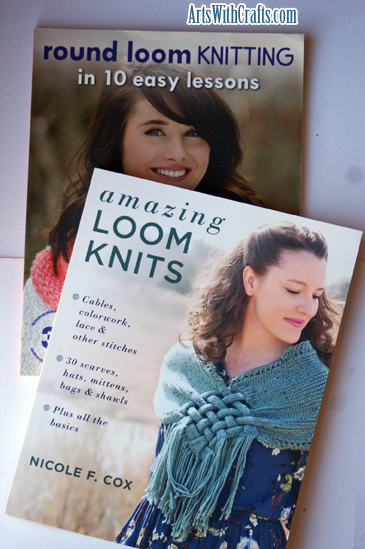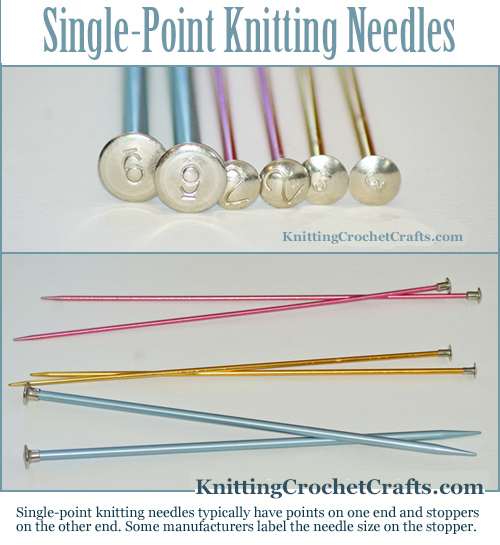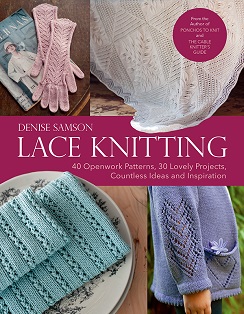Knitting can be many different things to different people. It is…
- A method of creating fabric: by machine, by hand or using a loom
- A way to create finished projects such as sweaters, shawls, blankets, scarves, hats, fingerless gloves, socks, bags, soft toys, jewelry and more.
- A needlework technique
- A craft technique
- An art form
- An industry
- A hobby
- A pastime
- A job
- Entertainment
- A creative way to entertain others — perhaps the kids, or grandkids
- A means of self-expression
- A way to relax
- A sanity-saver in times of stress or distress
- A gateway to meditation
- A social activity
- A solo activity
- An act of charity or generosity
- A media that can be combined with others to create mixed media projects
This is probably not a comprehensive list, as there are other possible ways that knitters could view their knitting.
Knitting Fabrics vs Knitting Finished Items
When using an industrial-type knitting machine that knits tiny stitches, you can knit fabric that can later be cut and sewn to create finished items such as t-shirts, dresses, shorts, pants, baby bibs, onesies and other sewn products.
You can also engineer your knit stitches to create the fabric and the finished item(s) at the same time, as in the case of some knitted socks and sweaters that are knit by either machine or by hand. Since hand knitted fabric is prone to easy unraveling, hand knitters often prefer to create finished items rather than creating fabric that would be cut and sewn later.
Machine Knitting vs Hand Knitting vs Loom Knitting
Machine Knitting: There are two major classifications of machine knitting: weft knitting and warp knitting. There are many different variations of each; there are knitting machines small enough to fit in your hands, and then there are knitting machines so large that they wouldn’t fit in the average home, and have to be stored in industrial warehouse space. There are circular knitting machines, which produce fabric knit in the round; there are also flatbed machines, which produce fabric knit in rows. Then there are smaller icord machines, which knit icord to use in a variety of different ways.
Loom Knitting

There are also low-tech knitting looms available. If you want to try loom knitting, I highly recommend Round Loom Knitting in 10 Easy Lessons for more information on how to get started.
The authors of this website are experienced weft knitters, with both extensive industry experience and extensive experience approaching knitting from a handcraft perspective. We’re comfortable with thinking of knitting as art, craft, industry, creative pursuit, hobby, job, or pastime — and our goal is to be supportive of knitters who take any and all of the above approaches to knitting. We have shared, and plan to share, information of interest to knitters of all varieties.
However, having said that, it’s worth noting that we have minimal experience with warp knitting, and so instructions and patterns utilizing the weft knitting technique are the main focus of the knitting pages on our website. In the future, when we learn more about warp knitting and find good resources about it, we’ll be sharing those too — but that’s not our main focus at this time.
Hand Knitting: Hand knitters utilize the weft knitting method for creating their stitches and projects.
Knitting Materials: Supplies You Need for Hand Knitting
Yarn or Alternatives Including Wire, Plarn, Rag Balls and More
You’ll need yarn or some other similar material to be knitted. Yarn is the most popular choice, but there are other possibilities. A few alternatives include wire, cut-up plastic bags (known as “plarn”) and fabric strips transformed into rag balls. Some people also knit with roving or other materials.
Knitting Needles

There are people who use only their fingers and arms to knit. This is a practice known as “arm knitting”. But if you want to knit in the traditional way, the most usual way of doing that is using knitting needles. Knitting needles come in a broad variety of different lengths, sizes and configurations. There are straight knitting needles, double-pointed knitting needles and circular knitting needles. There are also interchangeable knitting needles. If you’d like more in-depth information, check out our beginner’s guide to knitting needles.
How to Knit
“Casting on” is the first step in hand knitting. There are many different ways to cast on, but they all have one thing in common: the cast on stitches form the foundation of your knitting project, and you build on that foundation by knitting more stitches into the stitches that you have cast on.
Knitting Stitches:
There are two basic stitches in knitting: the knit stitch, and the purl stitch. You utilize these two basics, plus slight variations including yarn overs, increases and decreases, to create various knitting stitch patterns that can include rib stitches, lace stitches, cables, texture stitches, popcorns, chevrons, pictorial stitch patterns and others.
How to Knit FAST: 9 Tips for Speed Knitting
Knitting isn’t a fast process, no matter how you approach it; going to the store to buy a new knitted item is likely to always be faster than knitting it yourself. But it’s possible that you might be able to learn some tricks for knitting faster in our guide to speed knitting.
Knitting Techniques
After you’ve mastered the basic knit and purl stitches, you might wish to learn some knitting techniques that will empower you to combine them in creative ways.
Cable knitting is a technique you can use to create knitted projects featuring intricate cables and textured stitches.

Lace knitting is a lovely technique to learn — and it isn’t as challenging as you might think. To create the “lace holes” in knitting, you use a technique called “yarnovers”. You basically just wrap your yarn over your needle to complete the yarnover. It’s pretty easy overall, but you can create some spectacular designs with this technique.
Knitting vs Weaving
Knits and wovens are two major classifications of fabrics. They differ in that knitted fabrics are comprised of interlocking loops, whereas woven fabrics are comprised of threads, yarns or fibers that pass overtop of and underneath of each other in varying patterns.
Hand Knitting Books
We’ve reviewed bunches of lovely knitting books that offer you a broad range of patterns and techniques. If you’re looking for a new knitting project to work on, you’ll definitely want to check out this page to find some fabulous ideas.
Hand Knitting Patterns
If you want to knit a project by hand, you can either design your own project from scratch, or use a knitting pattern that someone else designed.
Ordinarily, this is the spot where I would link to a bunch of lovely knitting patterns, but I am going to have to work on rebuilding this section of our website. The links I used to have here are mostly outdated so I am going to work on fixing them.
So there you have it: That’s our overview of knitting. We hope you found this information helpful. If you have comments or questions, you’re invited to leave a comment in the comments area.
About the Author:Amy Solovay has been knitting since her teenage years. As a self-taught knitter, her knitting was a little bit unconventional at first, and she made every beginner’s mistake you could imagine. She later enrolled in a textile design degree program at the Fashion Institute of Design and Merchandising (FIDM LA) — and during her time at FIDM, her knitting instructors set her straight on how to knit correctly. She also learned how to machine knit at that time. Later she enjoyed designing circular knitted fabrics professionally for one of Los Angeles’ largest textile converters. She’s now working as a freelance writer and content marketer. She writes about a broad variety of topics, but her preferred assignments involve writing about business, manufacturing, entrepreneurship, education, textiles and crafts.